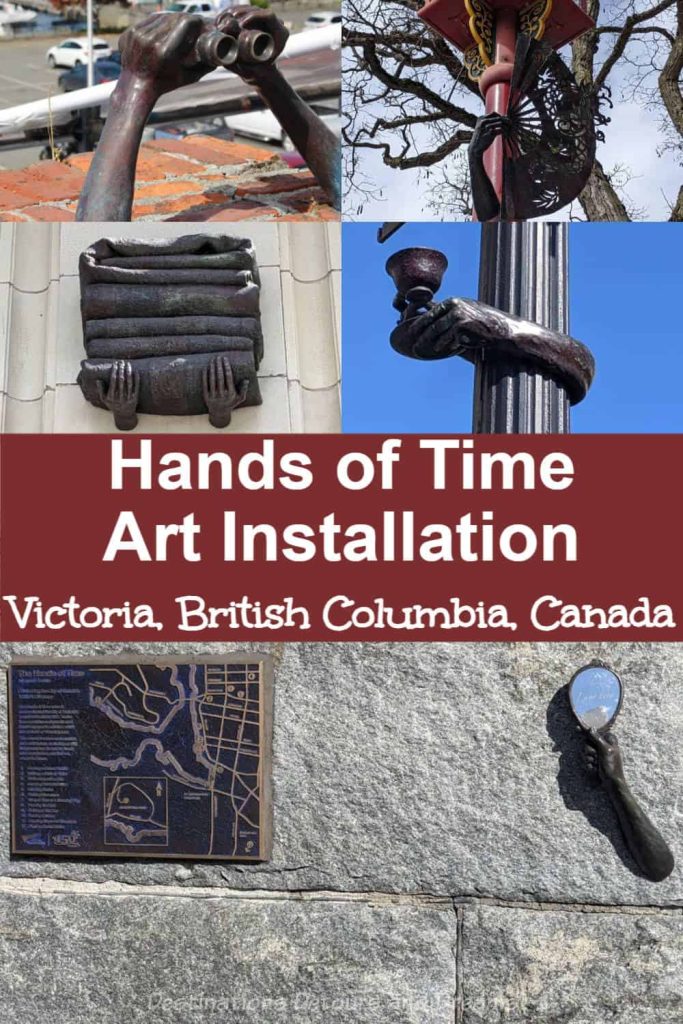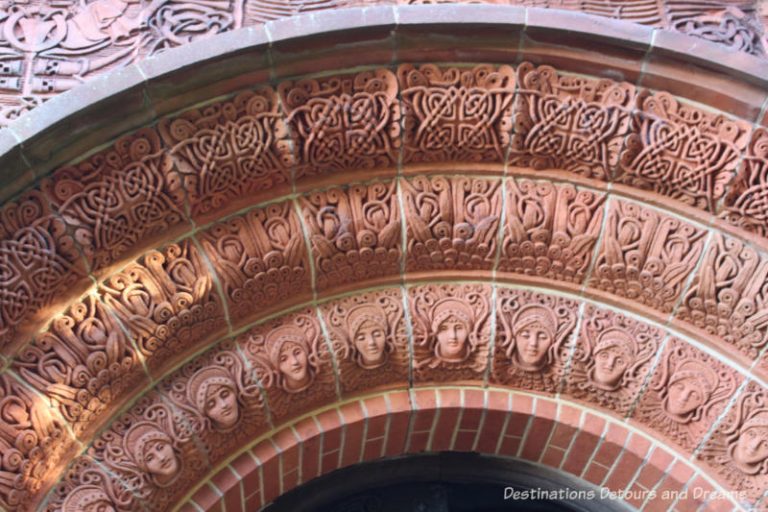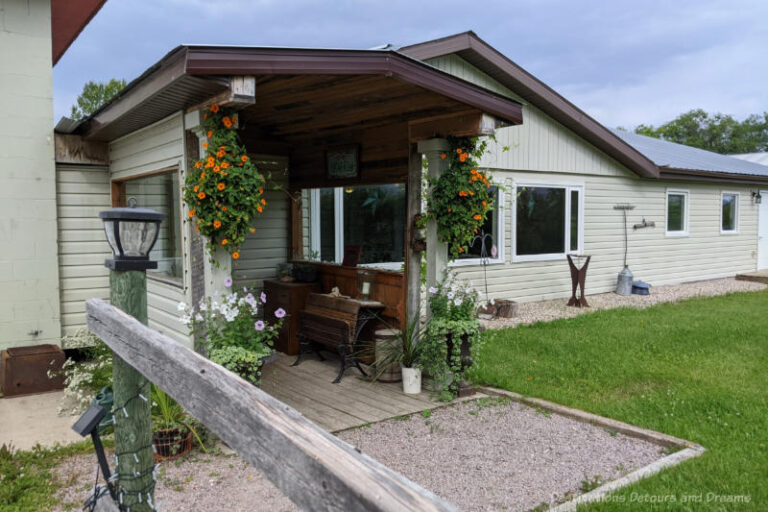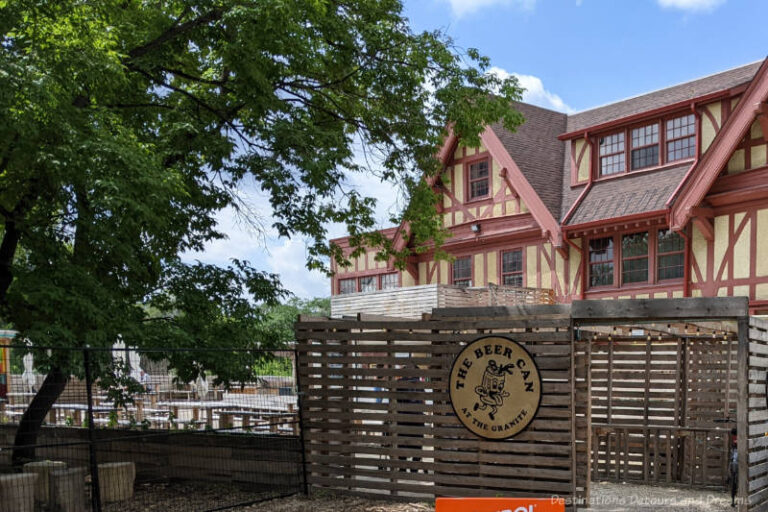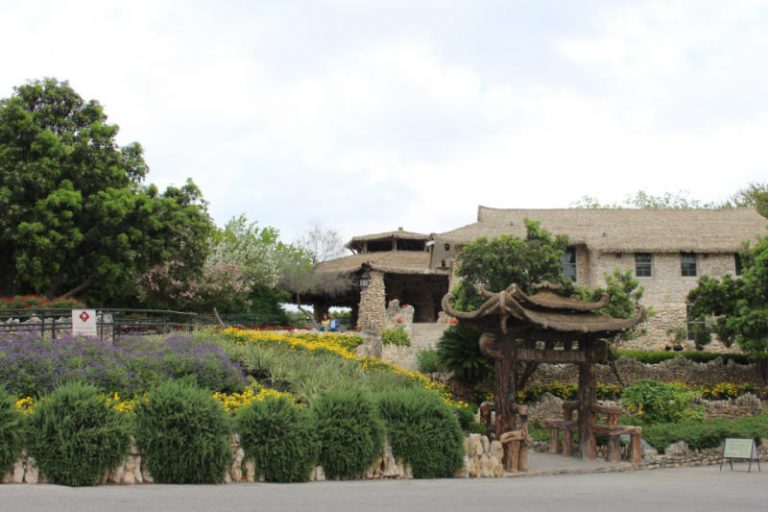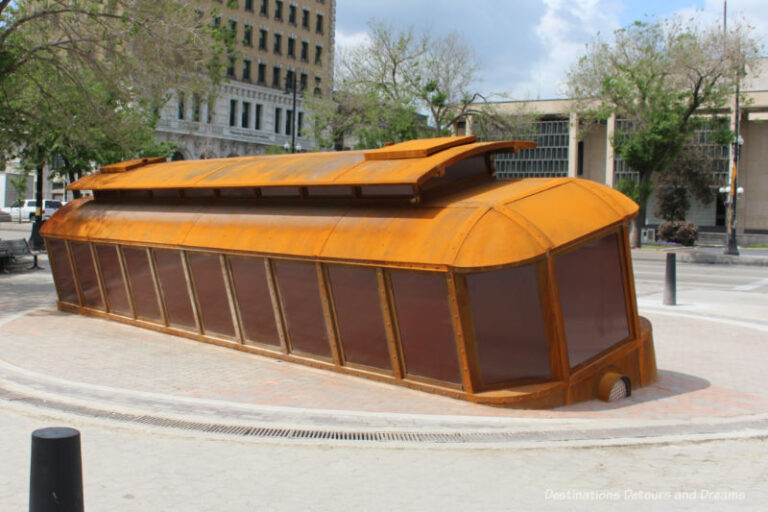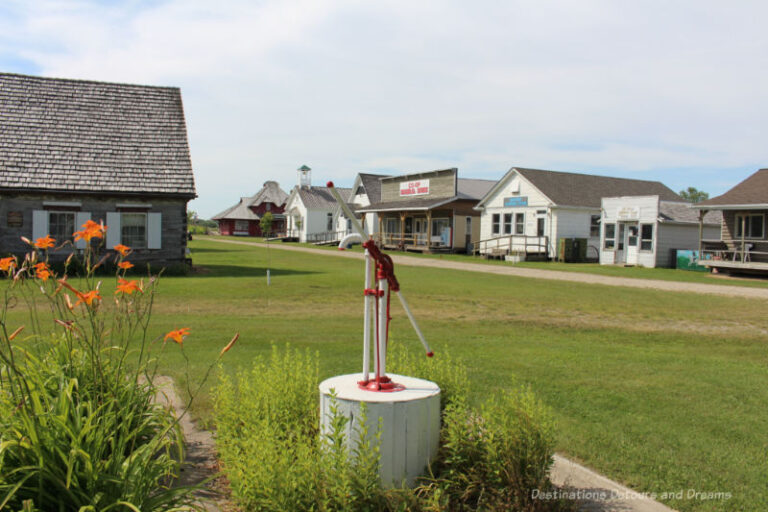Victoria’s Hands Of Time Art Installation
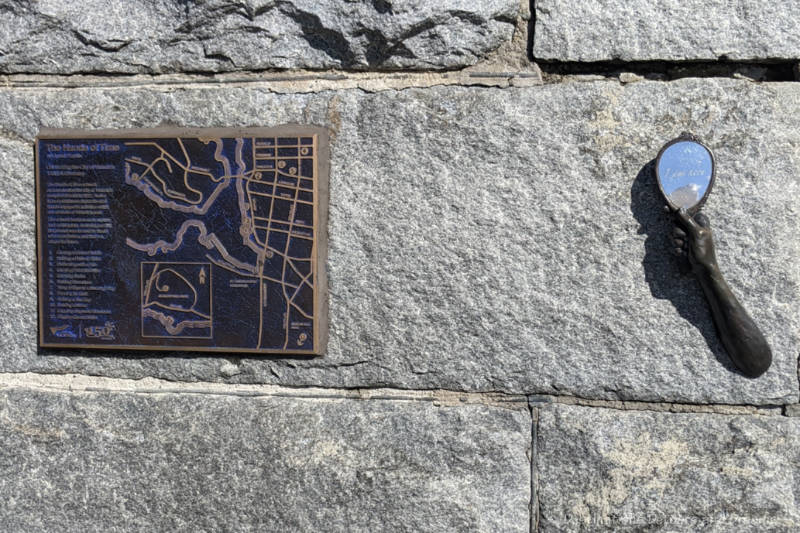
A public art installation in Victoria, British Columbia, Canada features hands engaged in activities significant to the city’s history
Viewing one of the public art installations in Victoria, British Columbia, Canada is a bit like a scavenger hunt. The Hands of Time consists of 12 bronze sculptures that depict life-size hands engaged in activities symbolic of Victoria’s past. The sculptures are located at various places through the downtown area.
The art installation by artist Crystal Przybille was commissioned by the City of Victoria to commemorate the city’s 150th anniversary of incorporation in 2012.
The artworks are found on buildings, lamp standards, and rocks in landscaped areas. There is not a lot of fanfare around the sculptures. There is no special signage. If you aren’t specifically looking for a piece or paying attention, you might easily walk by one and not realize it’s there. The location of each piece is significant as it has relevance to the sculpture’s theme.
On a recent visit to Victoria, my sister and I made it a mission to see all of the sculptures over a period of a few days. This walking tour brochure provides information about the location and meaning of the sculptures. Even with that and the fact that my sister had previously hunted out most of them, there were a couple that proved a bit of a challenge, but we did manage to see all of the them.
1. Carving a Canoe Paddle
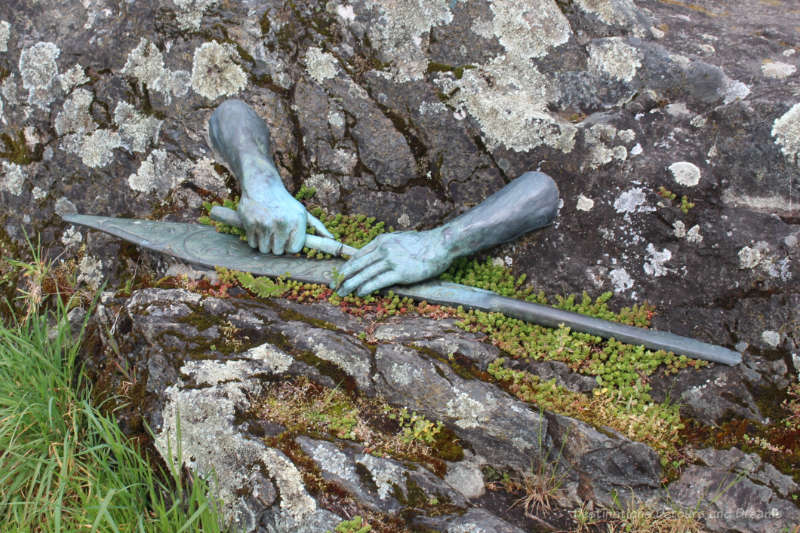
This sculpture references Lekwungen culture, both past and present. The Lekwungen are a indigenous North American Coast Salish people, known today as the Esquimalt and Songhees Nations. The paddle element of this sculpture was designed by First Nations artist Clarence Dick.
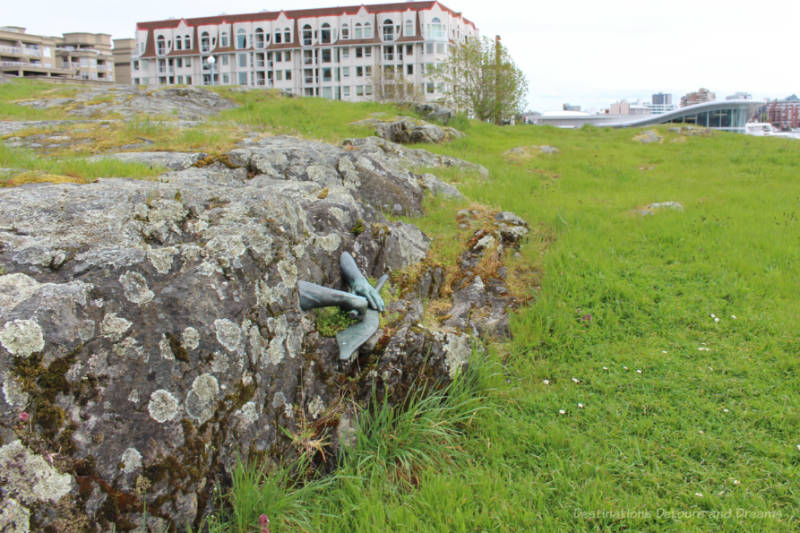
This structure is located in Lime Bay Park along the Songhees Walkway. The structure protrudes from bedrock in the grassy area near the waterfront. You may need to walk through the field to find the specific piece of bedrock.
2. Holding a Railway Spike

The Holding a Railway Spike sculpture, located on the base of a lamp standard on the east side of Wharf Street between Pandora Avenue and Johnson Street, references the construction of an island railroad in the 1880s. The railroad connected Victoria with the railway system of Canada.
The Vancouver Island Railway was incorporated in 1883. It was first known as the Esquimalt and Nanaimo (E&N) Railway because the initial rail extended for 115 kilometres from Esquimalt to Nanaimo. The artwork is located within proximity to the old E&N Railroad.

On the grassy area behind the lamppost containing the sculpture, you’ll find another piece of public art: a bronze sculpture of Michael Collard Williams (1930–2000) sitting on a stone park bench. The sculpture identifies him as a city benefactor but provides no other information on the man for those who might not be familiar with him. Williams was a self-made millionaire and high-profile community member. Born in England, he settled in Victoria in 1955. He was a heritage conservationist who revived a number of old buildings in Victoria, an art collector, and a philanthropist who supported cultural and community organizations and social justice work.
3. Performing with a Fan
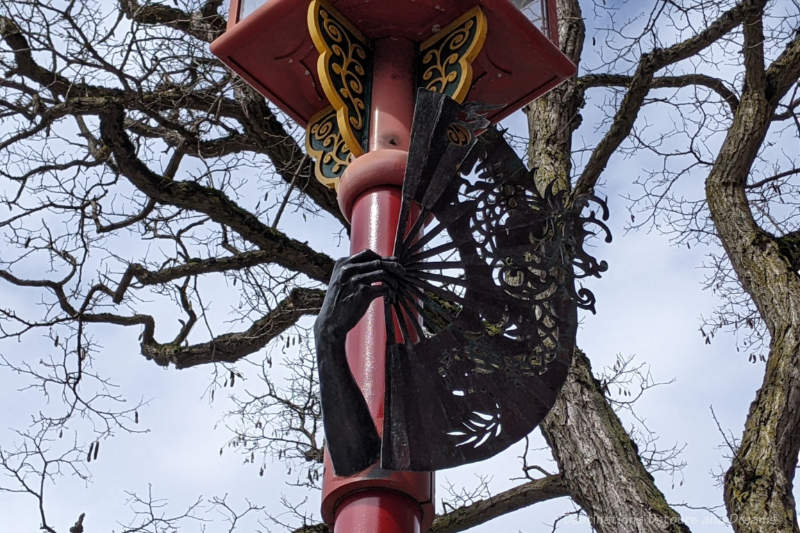
Located on the upper part of a lamp standard on the east side of Government Street between Fisgard Street and Pandora Avenue, Performing with a Fan symbolizes the significance of Chinese culture and the performing arts in Victoria’s identify.
This location is on the edge of Victoria’s Chinatown, the oldest Chinatown in Canada. Chinese gold miners came through the port of Victoria in the 1850s and 1860s on their way to the Fraser River and the Cariboo. In the 1880s, Chinese men came to help build the Canadian Pacific Railway. You can read more about Victoria’s Chinatown in my post Canada’s Oldest Chinatown.
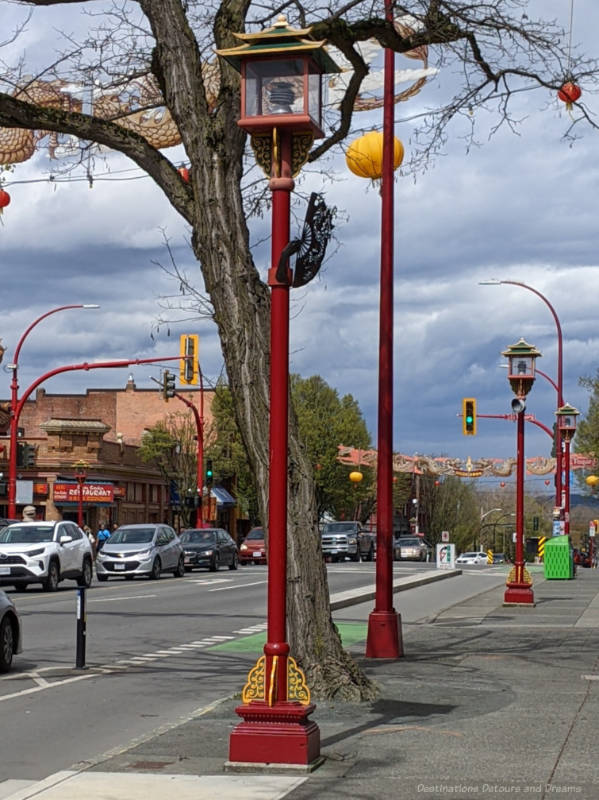
Also nearby is the McPherson Playhouse, a heritage theatre offering live performances since 1914 when it was built as part of Pantages chain of theatres across Canada.
4. Carrying Point Blankets
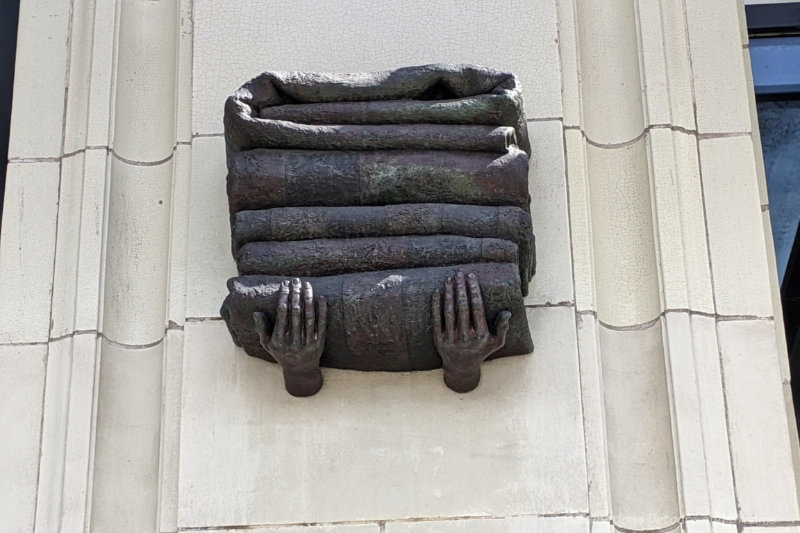
The Carrying Point Blankets sculpture speaks to the significance of the Hudson’s Bay Company in Victoria’s history. The Hudson’s Bay Company extensively traded wool point blankets during the North American Fur Trade.
In 1843, the London-based Hudson’s Bay Company established a fort on the southern end of Vancouver Island, fearing American annexation would affect its headquarters at Fort Vancouver, near the mouth of the Columbia River, in current-day Washington State. Information about the history of Fort Victoria on the Legislative Assembly of British Columbia website states the Lekwungen people of southern Vancouver Island assisted with construction of the fort, and supplied food and firewood in exchange for blankets, which were a traditional measure of wealth in Lekwungen culture and often a gift at a potlatch. Sadly, the new settlers brought a new culture, way of life, and diseases that were not kind to the Lekwungen.
This sculpture is located on the wall of the Victoria Public Market at the Hudson near its entrance on Douglas Street. The building had been constructed in 1913 as a Hudson’s Bay store and operated as such until 2003.
5. Carrying Books
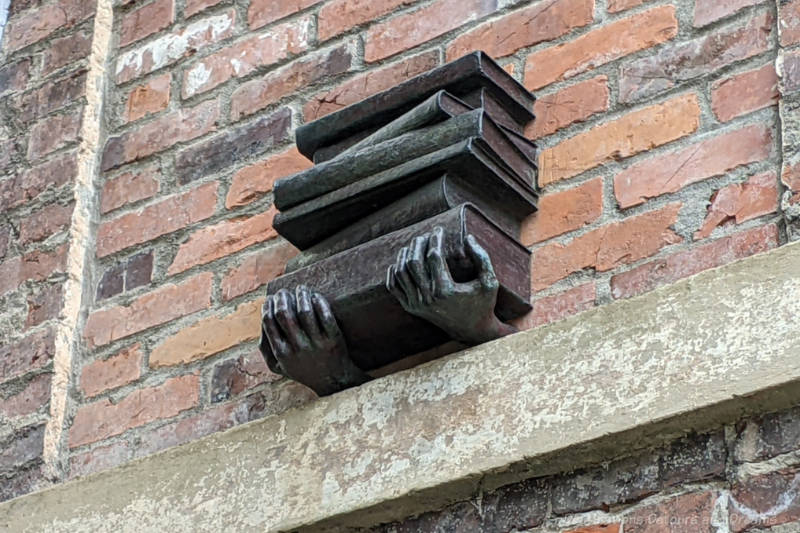
The Carrying Books sculpture, located on the west wall of Victoria City Hall at the Pandora Avenue entrance, symbolizes education and governance in the Capital City of British Columbia.
6. Holding Binoculars
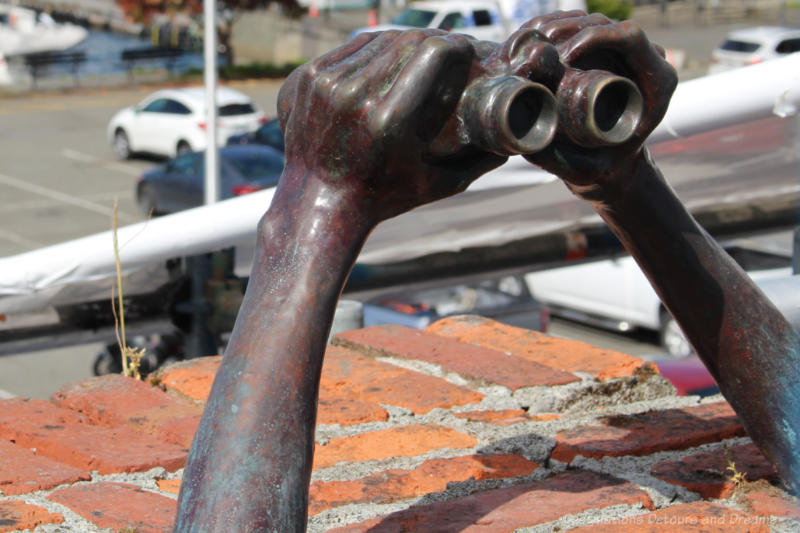
The Holding Binoculars sculpture sits atop a brick wall on the west side of Wharf Street just south of Bastion Square and looks out to the ocean. Victoria’s geography along the ocean has shaped its history as a port and a tourist city.
This is one of the sculptures that was a bit tricky for us, but not because of its location per se. Because of construction in the area, wooden walls blocked part of the wall and there was a chain link fence in front of the sculpture, but we were still able to see it.
7. Tying a Rope to a Mooring Ring
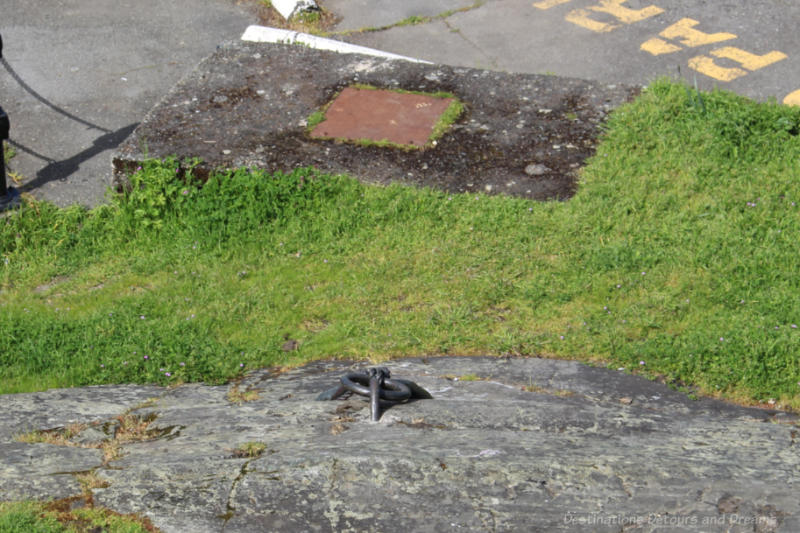
Tying a Rope to a Mooring Ring references the arrival of the first tall ships to the area and Victoria’s nautical identity. It is located not far from Holding Binoculars on the bedrock near David Foster Way below Wharf Street between Fort and Broughton Streets near the south end of the parking lot. I took this photo from above looking down at it.
8. Panning for Gold
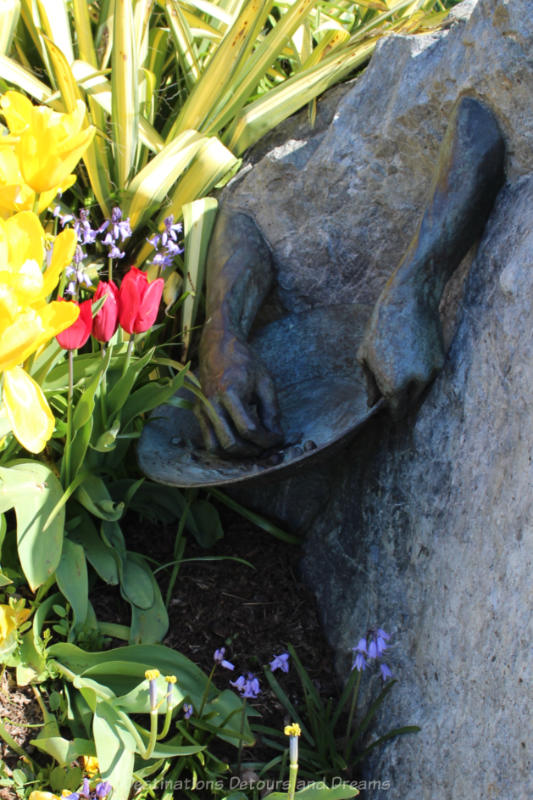
The Panning for Gold Sculpture is located on rock within landscaping below Wharf Street near Broughton Street.
We had a hard time finding this sculpture and we almost gave up. This area below Wharf Street is the site of seaplane flights and charters. We walked and drove through the parking lot. It turned out the area of landscaping was a shrub and flower bed at the north end of the parking lot just south of the north entrance.

The sculpture refers to the Gold Rush of 1858 that brought many people to Fort Victoria. The Old Victoria Customs House National Historic Site, where mining licences were administered, is located nearby.
9. Raising a Tea Cup

Raising a Tea Cup, located on a lamp standard at the corner of Government and Humboldt Streets near the Fairmont Empress Hotel, references Victoria’s traditional and historical connections with Britain. Victoria has been called “the most British city in Canada.” The Fairmont Empress Hotel is well-known for its traditional afternoon tea.
10. Holding a Mirror
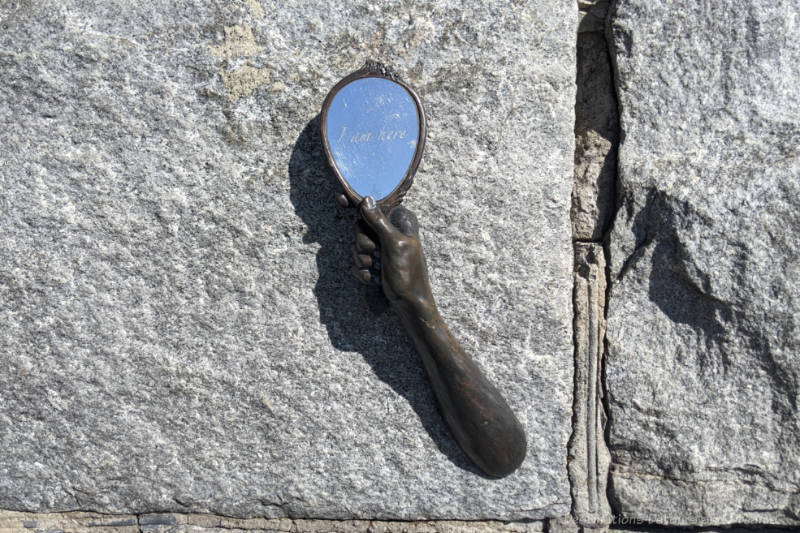
Holding a Mirror is located on Lower Causeway wall, below Government Street, near the central staircase. It is probably the most noticeable of the sculptures. Both tourists and locals stroll this walkway along the harbour. The area is often full of buskers and artists in the summer.
The mirror is meant to reflect the Inner Harbour, which is key to Victoria’s history and identity.
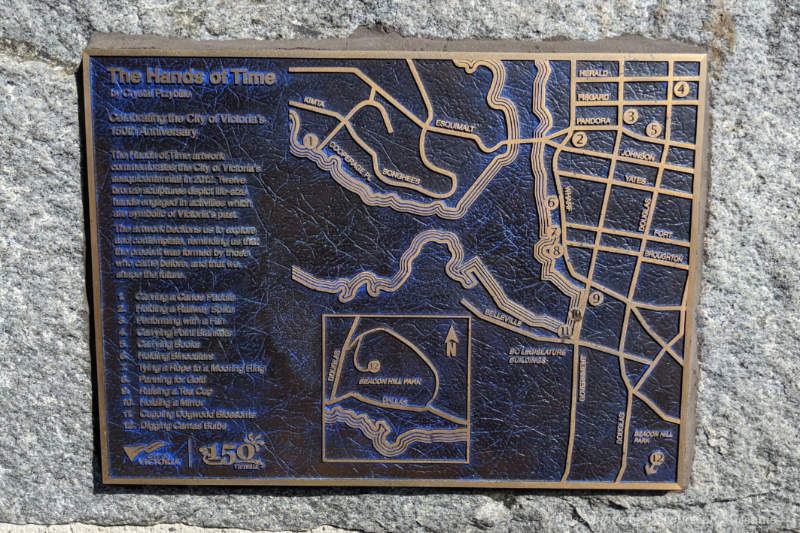
This is the only sculpture of the 12 that has a bit of an explanation with it. A plaque contains a brief description of the Hands of Time and a map showing the locations of all 12 sculptures.
11. Cupping Dogwood Blossoms

Cupping Dogwood Blossoms is located on a lamp standard on the north side of Belleville Street near Government Street. We had trouble finding this sculpture and couldn’t see it on any lamp standards. Later, my sister did some searching online and discovered the reason we’d missed it. We’d been looking up at the lamp standards. This sculpture is on the base. I returned another day and found it. For the record, it is on the second or third lamp standard west of Government Street and is on the west-facing side of the base.
The Pacific Dogwood is British Columbia’s floral emblem. This sculpture recognizes Victoria’s role as the province’s Capital City.
12. Digging Camas Bulbs
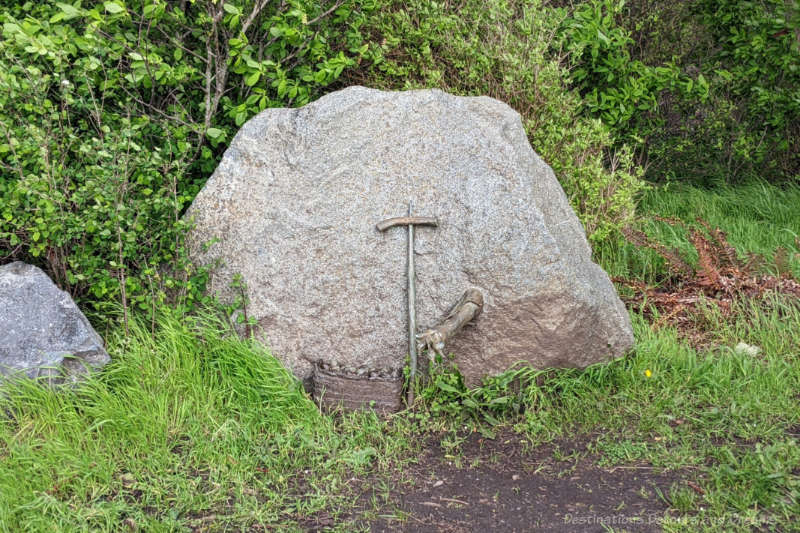
The camas plant is a member of the lily family and is native to the Garry Oak ecosystem of southeastern Vancouver Island. Its blue-purple flowers can blanket whole meadows in springtime. The Lekwungen people gathered Camas bulbs for food.
The Digging Camas Bulbs sculpture shows a basket, designed by First Nations artist Carolyn Memnook, and a hand holding a digging stick like the ones utilized by the Lekwungen people.
This sculpture is located on rockbed in a landscaped garden on Beacon Hill at Beacon Hill Park. This one would have been harder to find if my sister hadn’t previously found it. You drive to the end of the Beacon Hill Loop. The sculpture is a landscaped bed at the northeast end of the grassy area in the loop.
The Walking Tour Brochure contains a map and information about locations of the sculptures. I also found the sculptures listed on Google Maps.
Never miss a story. Sign up for Destinations Detours and Dreams free monthly e-newsletter and receive behind-the-scenes information and sneak peeks ahead.
PIN IT
